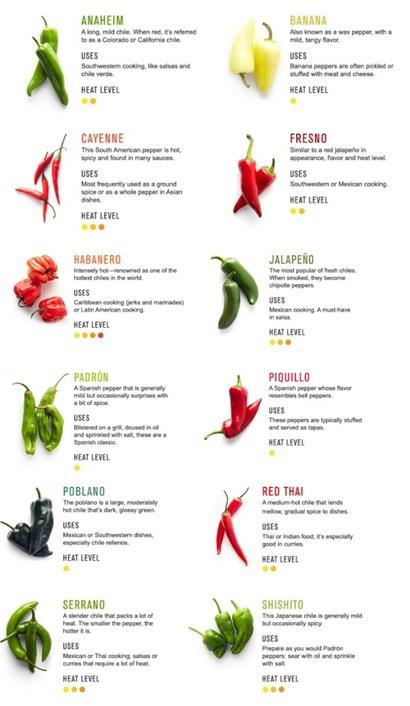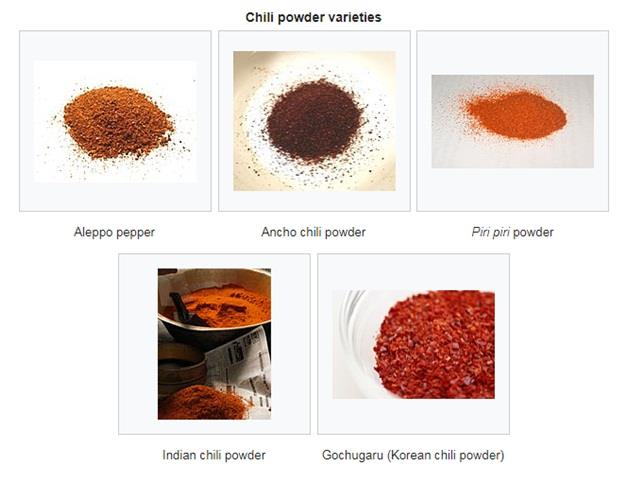DO YOU WANT TO EXCEL IN EVOLUTION OF A NOMINATED INGREDIENT ASSIGNMENT? HIRE TRUSTED TUTORS FROM EXPERTSMINDS AND ACHIEVE SUCCESS!
Question:
Trace the evolution of a nominated ingredient. Explain the factors that have contributed to the change in its use over time.
You will choose a food ingredient and explore its culinary use throughout history. You will need to identify how its use throughout history has changed and the factors that have influenced these changes.
Nominated Ingredient - Chillies
Solution:
Chillies:
Chillies are the fruits of plant from the genus Capsicum belonging to solanaceae family. Capsaicin and capsaicinoids are the substances which gives the chillies its spiciness. They are originated during 7000 BC in Mexico. (Kraig H. Kraft, 2014)
Culinary uses of chillies:
The pods or berries of chilli pepper can be used as fresh or dried.
They can be eaten as raw or cooked
Dried chillies are used as spice in food dishes.
It is used as ingredient in seasonings, curry powder, masala powders.
It is also used to make chilli sauce and other sauces.
They are also used as stuffing with fillings.
They are used in salads.
Dried chillies are used to infuse cooking oil.
Some chillies are used for extraction of colour which can be used in food and also as colourant in beverages. ("Culinary Uses")
Chillies are present in many cuisines, some examples are Arrabbiata sauce of Italy, Paprikash of Hungary, Kung pao chicken of China, Som tam salad of Thai etc.,
Apart from these culinary uses, it is also having a very good nutritional value.
There are 12 different types of chillies which have their own characteristics and culinary uses.

Figure 1: Various types of chillies and their culinary uses. Adapted from
The evolution of chillies from time to time is as follows:
Green chillies
Red chillies
Chilli flakes
Crushed chillies
Chilli powder
GET GUARANTEED SATISFACTION OR MONEY BACK UNDER EVOLUTION OF A NOMINATED INGREDIENT ASSIGNMENT HELP SERVICES OF EXPERTSMINDS.COM - ORDER TODAY NEW COPY OF THIS ASSIGNMENT!
Green chillies: These are the most common type of chilli. It is an immature chilli pepper.
Culinary uses: Its culinary uses include making of spicy dishes, used as masala by blending withginger and garlic, used in making curiies, bread, meat dishes, stir fries. It is also an ingredient in green seasoning, a spice mix and tempering or tadka which were used in making many dishes. They can be used as fresh or dried or powdered or pickled and also can be used with or without stalks and also seeded or deseeded. ("Green chillies").
Red chillies: Red chillies are fully matured, ripened and dried chilli pepper.
Culinary uses: It can also be used as a whole or powdered. They are used in kitchen as it is or in powder form. Mostly it is used as red chilli powder. It is used as spice or can be used as pickles. The pickles increase their storage for longer time. It is the ("Red chillies").
Factors influencing evolution of red chillies: As red chillies are more spicer than green chillies, the red chillies usage becomes more when compared to green chillies. In addition the storage time is longer for red chillies in comparision with green chillies.
Crushed chillies: The crushed chillies are just crushed form of chilli pepper.
Culinary Uses: It is mostly used as a condiment. It is used in the manufacture of various food items like pickles, pickling blends, sauces, sausages, soups, ketchups etc., It is most commonly seen on tables of Mediterranean restaurants and pizza parlours. ("Top 5: Uses For Red Pepper Flakes") (Bovino, 2012)
Chilli flakes: The dried and chopped chilli pepper. These are also called as crushed red pepper flakes or Paprika. Based on the variety of pepper and whether there is any inclusion of spongy tissue the flavor of the chilli flakes vary from sweet and mild to hot. Paprika is the national spice of Hungary.
Culinary Uses: It is rich in colour, so it enhances visual appearance of foods. It is also used as a key flavouring agent. It is used in combination with savoury foods like stews, vegetable curries, pizzas, salads, creamy sauces, tomato dishes etc., it is the main flavouring agent in Hungarian dishes. It can also be used as sprinkler or for garnishing homemade dishes and fries. By mixing with bread crumbs, it is used as sprinkler on vegetables and casseroles. Occasionally they are used in desserts and chocolates. They are mostly used in Italian cuisines. ("Dry red chili flakes")
Factors influencing evolution of chilli flakes and crushed chillies: The usage of chilli flakes and crushed chillies as sprinklers on any type of dishes or snacks made it more advantage than red chillies. They have added advantage of flavoring property. This marked their evolution from red chillies.
GETTING STUCK WITH SIMILAR EVOLUTION OF A NOMINATED INGREDIENT ASSIGNMENT? ENROL WITH EXPERTSMINDS'S EVOLUTION OF A NOMINATED INGREDIENT ASSIGNMENT HELP SERVICES AND GET DISTRESSED WITH YOUR ASSIGNMENT WORRIES!
Chilli powder: It is the dried, pulverized fruit of one or more varieties of chilli pepper. It is also called as chilli powder blend or chilli seasoning.
Culinary Uses: It is the most commonly used spice in the kitchen. It adds flavor and pungency to food dishes. It is used in many different cuisines including American, Thai, Mexican, Indian, Chinese, Portuguese, Korean etc., It serves as a primary flavor ingredient in chili con carne. It is used to add a kick to BBQ sauce, to heat up spicy chutney or salsas, in seasoning of rice, in soups, lentil and bean dishes. It is also used as a part of spice rubs for meat and seasoning of ground meat for enchiladas, tacos ("Chili Powder - Adding Heat and Flavor to your Food").
Factors influencing evolution of red chilli powder: The red chilli powder can be used readymadely without any further processing. Its storage period also enhanced. The chilli powders can be made by blending different varieties of chilli peppers. These advantages made the evolution of chlli powder.
There are different varieties of chilli powder based on the type of chilli pepper used.

Figure 2: Varieties of chili powder. Adapted from Kat Smith, Your Guide to Spicy Chili Powders!
Bell peppers: Bell peppers are sweet peppers in the same genus and species as chillies. There are different varieties of bell peppers like green bell pepper, yellow bell pepper and red bell pepper. All the bell peppers come from the same plant but the degree of ripening and time of harvesting decides the type of bell pepper. The immature bell pepper is green in colour and is called green bell pepper, and as time proceeds it changes to yellow colour. Then it is called as yellow bell pepper. The completely matured and ripened form of bell pepper is red in colour and is considered as red bell pepper.
Culinary Uses: Bell peppers can be eaten raw or cooked. They are used in salads, savory dishes, stuffed foods. They impart sweet and color to dishes. They are used as sweetener and colorant in pizza, pasta, omelets, antipasto etc., along with olive oil and spices it is used as main ingredient in cold salads. The raw bell peppers are used as appetizers and are added with dips and spreads. They are also used in grilled sausage, can be sauted with sliced olives and green beans, can be used as seasonings with garlic, can be used as stuffing with chopped and cooked vegetables, meat or cheeses, used in egg dishes and sandwiches. The roasted pepper strips can also be used in omelets, sandwiches. The puree of bell peppers can also be used in preparation of soups, sauces, stews. (Sharon Maasdam, 2004).
Factors influencing evolution of Bell peppers: the bell peppers are less spicy and are somewhat sweetened. This modification helps in the usage of bell peppers in various food dishes. Also their less spiciness helps in preventing several health issues and they are having health benefits when compared to chilli pepper.

Figure 3: Green and Red chillies, chilli flakes.
NEVER BE CAUGHT IN PLAGIARISM, AVAIL EVOLUTION OF A NOMINATED INGREDIENT ASSIGNMENT HELP SERVICE OF EXPERTSMINDS.COM AND SAVE HIGHER MARKS!